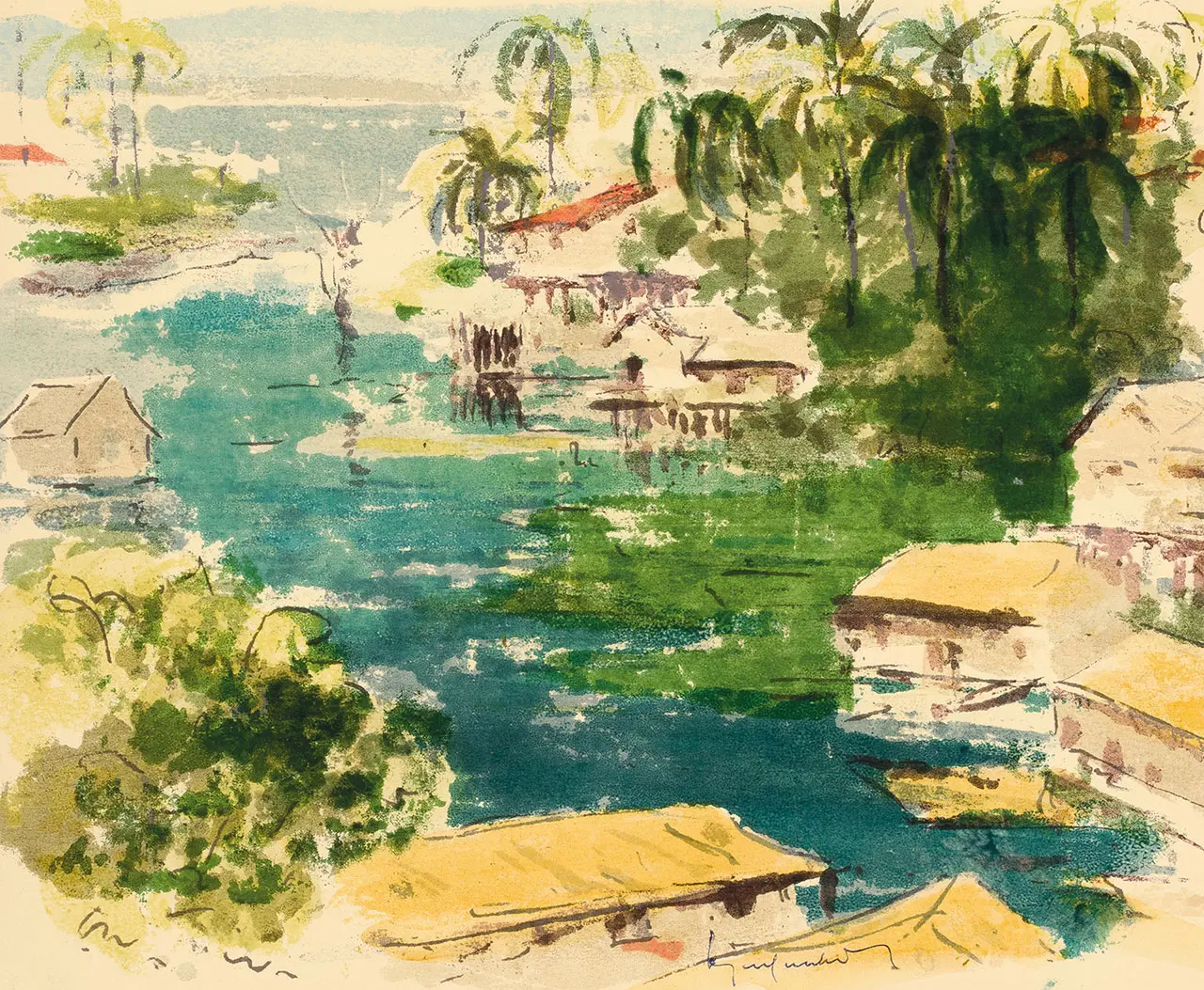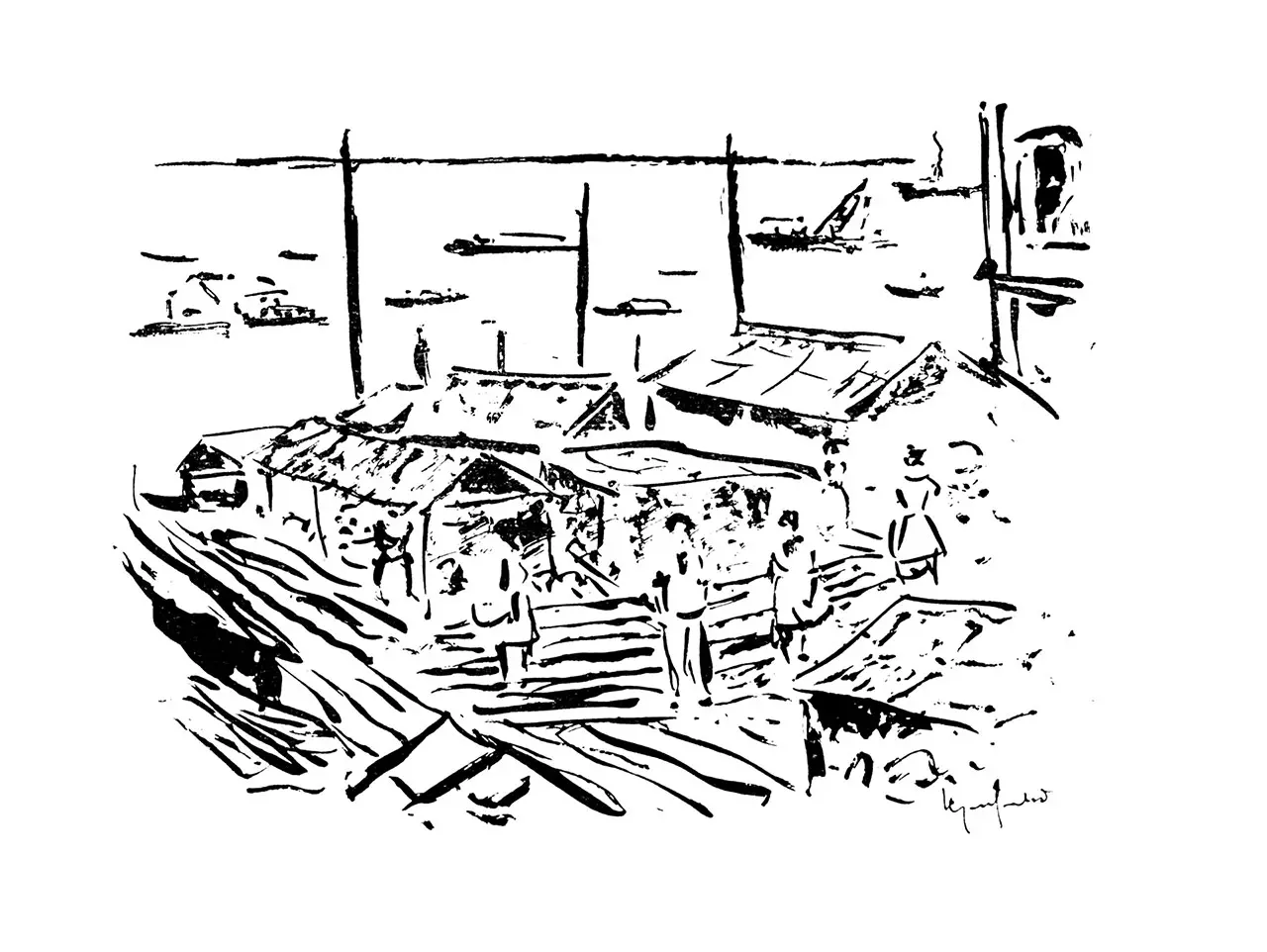Manaus - AM | 1962
34. The Igarapés of Rio Negro
28,4 x 22,3 cm | Hand-watercolor lithograph
Not happy to push Manaus against the Amazon forest, the Rio Negro forces its igarapés¹ into the heart of the city. Its dark waters sometimes stretch between the slopes of the green river banks, sometimes they weave through, like water alleyways, amongst old walls. The São José igarapé penetrates deeply into an amphitheater of luxuriant vegetation: banana trees, jackfruit trees, mango trees, cashew trees surmounted by the undulating canopy of palm trees.
However, in fair retribution, if the river invades the city, the
men build on the waters, and everywhere, perched on wooden stilts
or on floating balsa trunks, humble rammed earth huts covered with
dried palm leaves, small wooden houses sometimes interconnected by
genuine floating streets to form a stilt house city of the most
extraordinary appearance. The marketplace itself floats along the
riverbank, gasoline and diesel oil stations as well as docks and wharfs
also float on the black, olive-greenish waters of this well-named
Rio Negro (Black River).
1. Small river or chanel, “canoe’s path” in the Tupi indigenous language.

